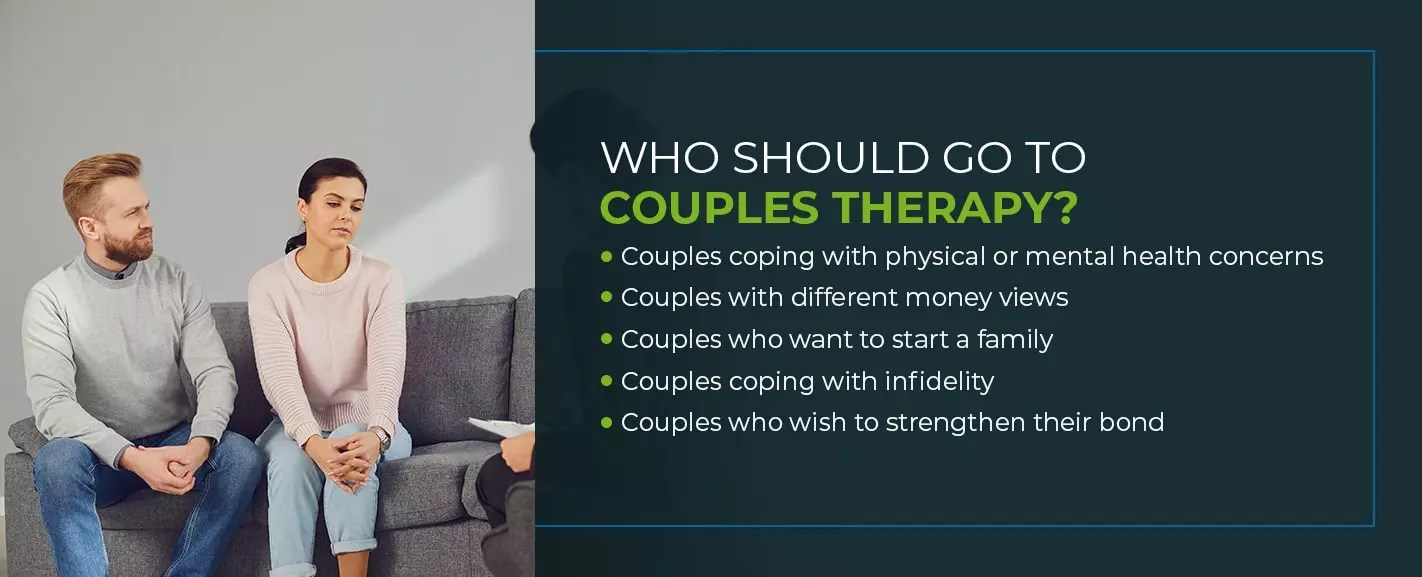What Does Aim Point Counseling Do?
What Does Aim Point Counseling Do?
Blog Article
The 10-Second Trick For Aim Point Counseling
Table of ContentsAim Point Counseling Things To Know Before You BuyExcitement About Aim Point CounselingAim Point Counseling Fundamentals ExplainedAim Point Counseling - An OverviewAim Point Counseling - TruthsAim Point Counseling Fundamentals Explained
The longitudinal design involves a pre-treatment study and 2 follow-up studies at 3- and 12-months post-intervention. The research study is embeded in eight Relationships Australia Victoria centres, throughout municipal, external residential areas, and regional/rural sites. Relationships Australia, a non-government organisation, is the biggest provider of pair therapy and connection services in Australia.
In Australia, the median length of marriage before separation is 8.8 years, and around fifty percent of all separations include pairs with youngsters [1] These high rates of connection malfunction have actually been continually linked with unfavorable wellness effects for both grownups and kids following divorce/separation. These consist of seclusion from support networks, and reduced income and requirement of living for both adults and youngsters [3], problems of loyalty over youngsters for guys, and depression and loss of identification for females [4,5]
What Does Aim Point Counseling Mean?
The effects of divorce and separation can be detrimental, research indicates that high partnership disharmony in undamaged pairs is also likely to have adverse outcomes.
Additionally, aspects that influence the end results of these solutions need detailed examination. Research to day has actually identified both couple and private factors that may add to partnership dissonance. These include partnership contentment and commitment at the couple degree, and clinical depression at the specific degree. Robust research to assess relationship-enhancing interventions in the area are scarce.
Top Guidelines Of Aim Point Counseling
Connection complete satisfaction has been the most typical outcome variable recognized in greater than 200 examinations of pair counselling [11,12] Researches have discovered significant renovations in relationship complete satisfaction from pre- to post-treatment [13,14] and throughout one to two years following coaching [15] In these researches, partnership fulfillment was most often evaluated making use of the Dyadic Change Scale (DAS) [16] While the majority of research studies show improvements in connection fulfillment adhering to couple therapy, they are restricted by the examples and procedures made use of, mainly short-term follow-up time frameworks, and evaluations that do not account for the dyadic nature of pair information., is an additional frequently investigated connection outcome.
To summarise, research study shows that couple-specific variables in addition to specific elements may forecast the outcomes of couple coaching and connection services. The causal instructions of these partnerships, nevertheless, is much less clear. These observations are vital, because, to validate and direct the application of relationship services such as couple therapy, empirical evidence must check out both the outcomes of connection solutions and the factors that anticipate effective therapy.
, at the very least in some European countries.

We currently recognize little about the accounts of pairs that choose relationship education and learning compared to those who seek relationship counselling, or the end results of these programs. Nevertheless, anecdotal evidence recommends that there might be considerable distress among at the very least some couples looking for connection education. Connection education and learning programs vary from pair counselling as they are normally very structured, performed in teams, and concentrate on a blend of four parts; recognition, responses, cognitive change, and abilities training [45]
4 Simple Techniques For Aim Point Counseling
Responses involves individuals completing questionnaires concerning their partnership (e.g. steps of interpersonal problems), and receiving details on what their scores show. Cognitive-behavioural strategies advertise transforming cognitions to help with positive partnerships.
These effects have continued for as much as 4 years in some researches [47] Nonetheless, these meta-analyses highlight restrictions in the existing literature on partnership education and learning. Particularly, the bulk of researches involved couples from upper socio-economic backgrounds that were not experiencing high relationship disharmony [47,48] This sample profile might not stand for clients that generally present for partnership education.
A Biased View of Aim Point Counseling

Very little research study has actually analyzed the comparative benefits of pair coaching and partnership education programs. As clients are most likely to self-select right into these service kinds, it is not clear whether particular connection distress profiles present per service type, or certainly whether there is an interaction in between presenting account, service kind and outcome.
(https://www.slideshare.net/toddrashid01)
Thus, we have included a 12-month follow-up to gauge longer-term trends and effects.
As a result, we suggest to use multi-level analytical modelling treatments that regulate for the inter-dependence of couple information to examine any type of therapy effects. The particular purposes of the ECC study are to: 1. Map profiles of clients looking for community agency-based couple therapy vs. partnership improvement programs in terms of socio-demographic and partnership signs (such as relationship fulfillment, connection commitment, interpersonal issues, and factors for participating in), along with health (such as anxiety, basic wellness) and wellness solution use (eg.
2. Establish whether pair coaching and partnership education and learning services boost three- and twelve-month end results for connection contentment, dedication, and anxiety, using analytical evaluations proper to couple information. 3. Identify the relative contributions of client elements (individual and couple) and therapy/education factors to results at 3- and 12-months, and important link to sustainability of outcomes gradually.
Some Known Questions About Aim Point Counseling.
Multi-level modelling to determine pre-post distinctions, regulating for dyadic (couple) level. To contribute to the literature assessing the performance of community-based couple coaching.
Report this page